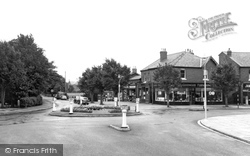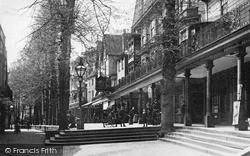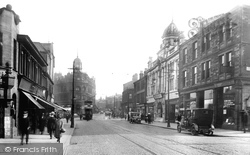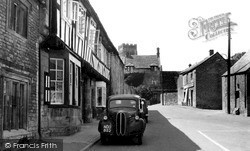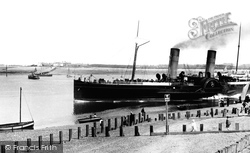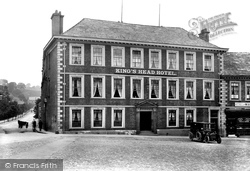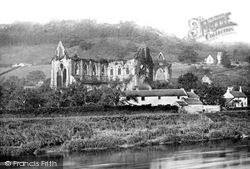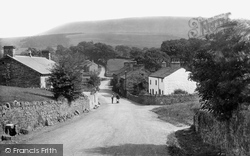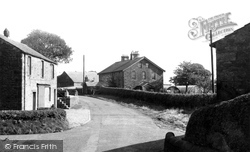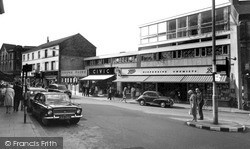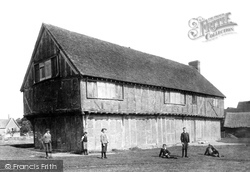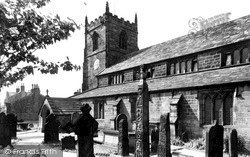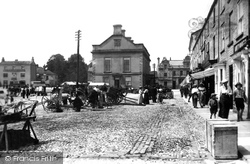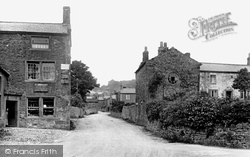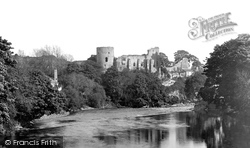Places
11 places found.
Those places high-lighted have photos. All locations may have maps, books and memories.
Photos
54 photos found. Showing results 1,561 to 54.
Maps
494 maps found.
Books
25 books found. Showing results 1,873 to 1,896.
Memories
9,956 memories found. Showing results 781 to 790.
Evacuation During The Second World War
During the early years of the Second World War my father was posted to the Royal Artillery camp in Almondbury and when we were bombed in our home in Hull he found a small house for my mother, sisiter and I ...Read more
A memory of Kirkheaton in 1940 by
Gants Hill
I moved to Gants Hill in 1968, from Bethnal Green, at the age of 8. I later moved to Wanstead aged 32. I have great memories of the place, I lived on the Eastern Avenue between Ethelbert Gardens and Beehive lane. Ray Powell was the ...Read more
A memory of Gants Hill in 1973 by
Cobblers Shop Rockingham Road Swinton
My memory relates to the cobblers shop on Rockingham Road, Swinton as this was my grandad's shop, I used to walk down the back way, behind the houses to get to it, it is still a shoe repairers shop. ...Read more
A memory of Swinton in 1967
Lawrence Family In East Molesey
On a holiday from Australia, today my husband and I visited East Molesey & Hampton Court. My mother's paternal family were the Lawrence's - Edward was a master butcher and had a shop in 156 Walton Road (now ...Read more
A memory of East Molesey by
Plough Inn
The Plough Inn, in High Bentham was bought by great grandfather Harold Slinger in the early 1900s. He then refurbished it in to two cottages. Harold Slinger was also the registrar for birth deaths and marriages as I recall. After ...Read more
A memory of High Bentham in 1970 by
Simply The Best
My parents took us to Kilchattan Bay every year from the mid 1960s. As far as my sister and I were concerned we didn't want to go anywhere else but KB. Used to love climbing the Suidhe which was a ritual for all Glasgow ...Read more
A memory of Kilchattan Bay by
Poetry
This poem was sent to mac by Mrs S. Holmes: Death of Chelmsley Wood The sheer delight of summer afternoons, As through the fields in cotton frocks we walked, The long grass licking at our gangly legs, While we in deep contentment ...Read more
A memory of Chelmsley Wood in 1995
Aber/Blaengwynfi Silver Prize Band Thankyou For The Music!
I grew up in Blaengwynfi in the 1950s/60s. My father was Don Davies, and he was band-master during most of those years. He'd joined the band in the 30s when he'd been forced to leave ...Read more
A memory of Blaengwynfi by
How Good Barking Was In The 1950s
I was born in Shirley Gardens in 1935, right opposite Barking Park where I spent most of my childhood at Barking open air lido. What a magnificent place that was! My father was a policeman in Barking so we always ...Read more
A memory of Barking by
James Joseph Irvine (Autobiography) 1911 1990
Stretching over about a mile on the A68 road to Edinburgh from Darlington, lies the small mining town of Tow Law. Approaching it from Elm Park Road Ends, on a clear day, as you pass the various openings ...Read more
A memory of Tow Law in 1930 by
Captions
2,019 captions found. Showing results 1,873 to 1,896.
The checkerboard finish on many of the buildings fronting the square is traditional and, in this case, dates back to the 18th century.
The site of Goodwood Furnishing (right) was originally occupied by the Rimmer family's fish, game and poultry outlets, and it is now home to a branch of Lloyds TSB Bank in a purpose-built
We are looking back from Bath Square, with the General Post Office on the right.
There is still a bank on the corner, but the market cross of 1790 is now located to the right of the square, after standing in the park opposite between 1968 and 1986.
We are travelling out of the city towards Manningham Park and on to Shipley and Bingley.
Knights joust above the dials; the same knight is struck back on his horse at every round.
The Ford Thames van bears a DD Gloucestershire registration; behind it we can just see the back of the latest Thames van which superseded it.
On arrival back at Southampton, her paddle-box was found to be damaged and she was sent to Harland & Wolff for repairs.
He was inspired by cathedral carvings of a lion, an elephant on the back of a turtle and the curious creatures carved on the misericords in the choir.
The doorway on the extreme right served as the bar entrance, and another doorway was inserted to the left when Lloyds Bank opened here c1920.
Records of an iron and wire works here go back to the 16th century, and production continued until around the end the 19th century.
This ancient and beautiful village dates back to Saxon times. The beacon on Pendle Hill is said to be Saxon, and the field known as Kirkacre was in existence when Alfred the Saxon was chieftain.
Bashall Eaves stands on the banks of the river Hodder in the parish of Mitton.
The village was once the seat of the diocesan church of St Asaph (Llanasaph), which dated back to the 13th century.
This view looks back towards Woolworth's from Bakehouse Hill, where the mini-roundabout marks the convergence of the High Street, Gold Street and Lower Street.
James Murgatroyd was the architect, and it was he who was invited back in April 1892 to oversee the taking down of the portico entrance and the bringing out of the front of the building to the pavement
The Moot Hall in Elstrow dates back to the 17th century and now houses a most interesting museum which commemorates Bunyan's life.
By AD410, all remaining troops were withdrawn as the Romans trudged back to deal with unrest in their homelands. Many artefacts have been since found within the site of the fort.
The porch to the church dates back to Norman times (13th century), the aisle from the 14th and the tower from the 15th century.
Completed in 1753 at a cost of £12, the Market Hall, Butter Cross and the stocks were removed at a cost of £16 6s from Main Street to the Prince of Wales park in 1888, which is where we see them in this
In the market place is an iron ring said to date back to the days of bull-baiting.
In the market place is an iron ring said to date back to the days of bull-baiting.
The road from Sawley to Waddington crossed the back road from Clitheroe to Slaidburn here, so the cloth produced from local wool could be taken to the markets and fairs on packhorses.We are looking
The Bishop of Durham claimed Barnard, and actually occupied it from 1296 to 1301, when Edward I took it back and eventually gave it to Robert Clifford.
Places (11)
Photos (54)
Memories (9956)
Books (25)
Maps (494)



